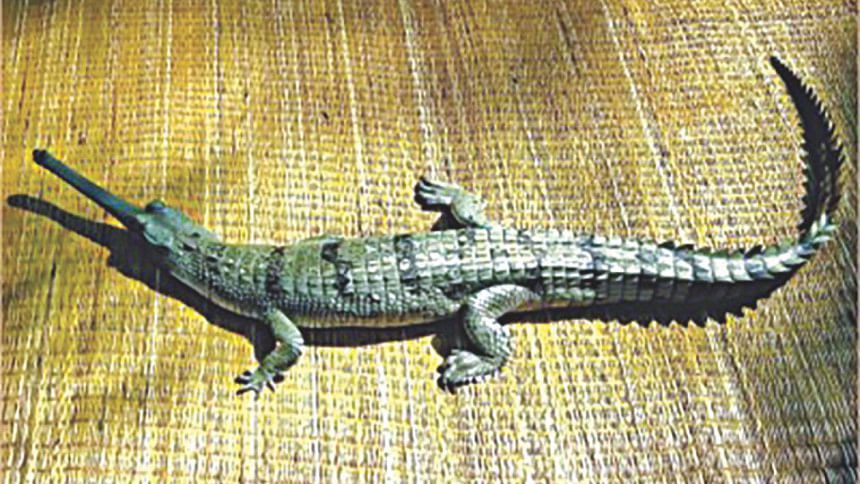First-ever move to increase Gharial population

For the first time, an initiative has been taken to exchange the critically endangered Gharials among the zoos to increase the species' population, according to officials.
An adult female from Rajshahi Zoo will be released today at the National Zoo in Dhaka and an adult male from the national zoo will be released in Rajshahi tomorrow to facilitate their breeding.
The exchange programme has been initiated to establish breeding facilities of captive Gharials among Bangladesh National Zoo (Dhaka), Rangpur Zoo, Rajshahi Zoo and Bangabandhu Sheikh Mujib Safari Park, Gazipur.
“There is not a single pair [of Gharials] in the country's zoos.That is why there has been no breeding for long. But now we are trying to breed exchanging the males and females of the species,” ABM Sarowar Alam, principal Gharial investigator of IUCN Bangladesh, told The Daily Star.
He added the zoo authorities have agreed to exchange the species for the first time to facilitate their breeding as part of the government's initiative of “Gharial Conservation Management and Action Plan.”
Md Jahidul Kabir, conservator of forests (Wildlife and Nature Conservation Circle), said, “The initiative has been taken to bring back the critically endangered species to nature.
“We have found some potential hotspots for Gharials in the Padma and Jamuna rivers. The exchange programme is the first step to facilitate Gharials' breeding in Bangladesh.”
He also said some other initiatives including raising awareness among locals, where Gharial sanctuaries will be set up, would be taken.
A recent study styled “Gharials of Bangladesh” conducted by the International Union for Conservation of Nature (IUCN) and the Department of Forestand funded by the World Bank to ascertain the number of captive Gharials in Bangladesh zoos revealed this information.
The study finds four females in Rangpur, four males in Dhaka, one male in Bangabandhu Safari Park and two females in Rajshahi.
A total of four adult males have been kept in Dhaka Zoo since their rescue from fishermen's net between 1983 and 1997. The males are healthy, but as there have been no females there is no breeding.
Two adult females reside in Rajshahi Zoo. In the enclosure, there is circular with a small island in the centre. Lack of gentle slope makes it difficult for the Gharials to reach the island for basking.
Four adult females are kept in Rangpur Zoo. The zoo has very poor facilities for basking and nesting of Gharials.
A young male of 115cm long has been kept at Bangabandhu Safari Park in Gazipur.
There are only 11 captive Gharials in the zoos, while sightings of 58 others were reported in the major rivers. As many as 39 sightings were reported in the Padma, 17 in the Jamuna and one each in the Brahmaputra and the Mahananda rivers.
In Dhaka, there is a Gharial which is around 41 years old and has never got an opportunity to court a mate. “So, after the female Gharial is released, next year might see their breeding,” Sarowar observed.
He said whenever they got Gharial hatchlings, they released those in the Gharial hotspots for natural growth and breeding.
Currently, there are four hotspots in the Padma and one in the Jamuna.
Gharials need a long time to get sexual maturity. They usually become adult after 13 years for males and 16 years for females when they are nearly three metres in length.
Breeding life of Gharials is usually 50 years, while the species live for around 100 years.
Sarowar said Rajshahi Zoo is completely ready for breeding, but Dhaka Zoo is being prepared for that.
The study identifies destruction of habitats and death by entangling in fishing nets as the main reasons behind the decline in the number of Gharials.
Erosion of the river banks and sand bars, extensive practice of agricultural crops on river banks, particularly during winter, frequent movement of engine boats and establishment of boat stations, and large-scale sand-mining are the other threats to Gharials, the study finds.

 For all latest news, follow The Daily Star's Google News channel.
For all latest news, follow The Daily Star's Google News channel. 





Comments